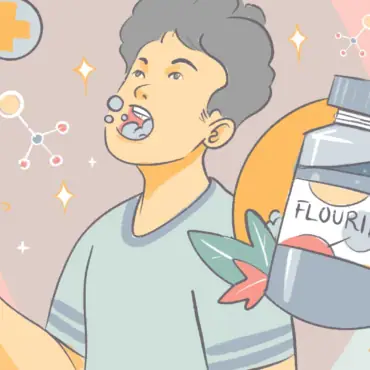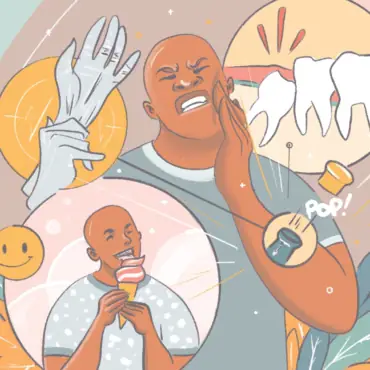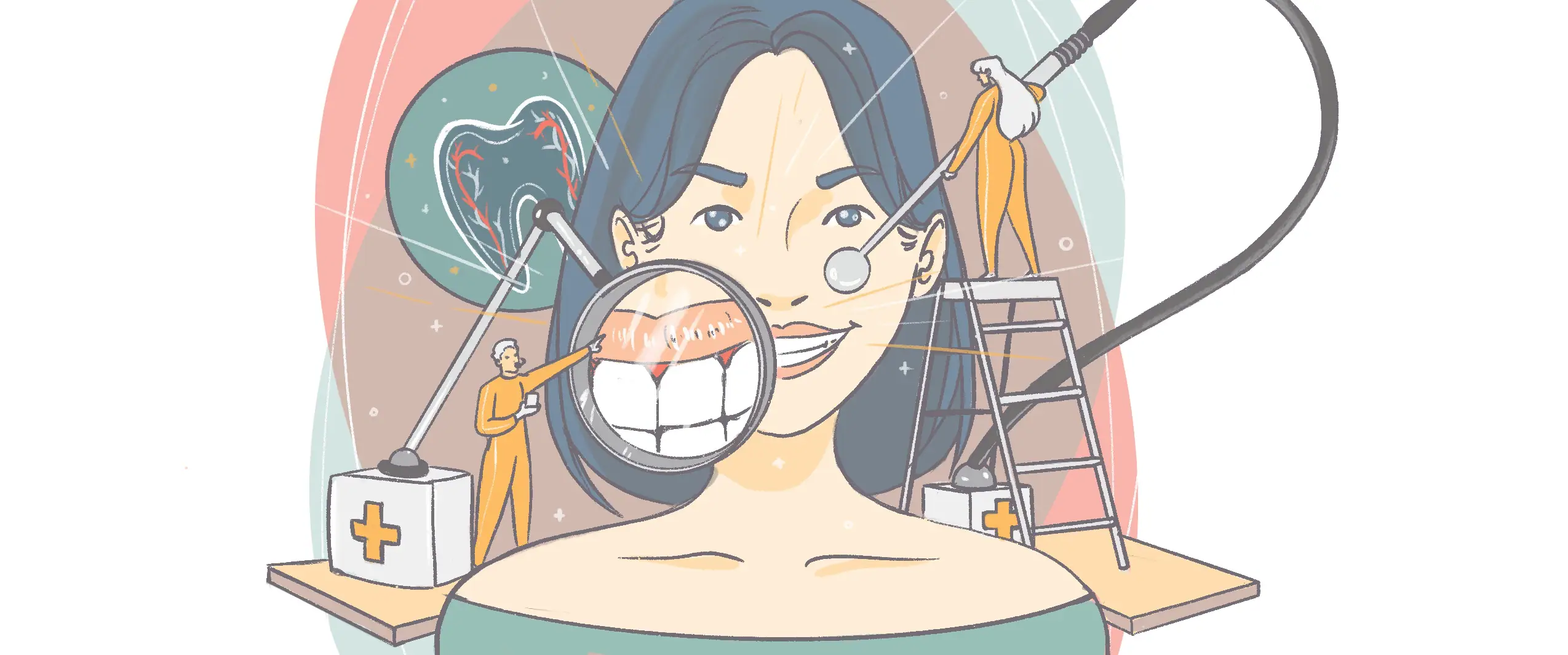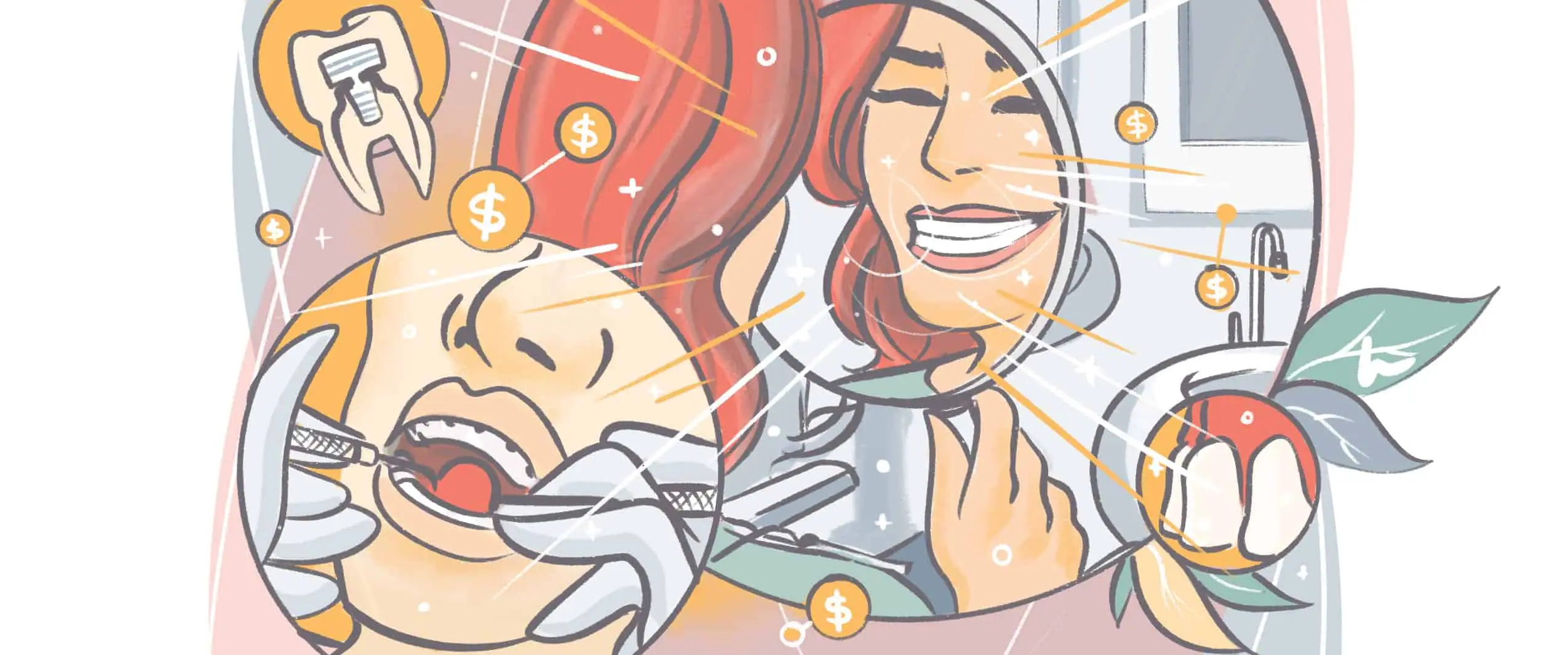What are dental caries?
Dental caries are small holes in your teeth. They begin as a demineralization of the tooth surface, and typically lead to the chronic, progressive destruction of your teeth. And they’re super-common! Most of us will have caries at one point or another.
According to the Centers for Disease Control and Prevention (CDC), the percentage of children aged 5-19 years with untreated dental caries is 16.9% in the United States, whereas 31.6% of adults have untreated caries. CDC also reports the total prevalence of caries (both treated and untreated) is 45.8%. About 13% of those cases account for younger people, aged 2-19.
And, dental caries is the most common chronic disease among youth aged 6-19 years. And about 92% of adults aged 20 to 64 have had dental caries in their permanent teeth.
Are dental caries the same as cavities?
The terms “dental caries” and “cavities” are often used interchangeably, but they’re not entirely the same. Caries is a medical term that refers to tooth decay. The term “cavity” refers to the presence of caries/tooth decay. Dental caries are not the only cause of cavities. A chipped tooth or broken filling can also cause a cavity.
What are the types of dental caries?
Not all causes of dental caries are the same. Dentists and scientists classify caries in different ways. Types of dental caries include:
- Enamel caries: Enamel is the hard glossy substance covering the crown of a tooth. Caries develops on enamel due to the acidic environment produced by bacteria.
- Acute caries: This is a rapid process affecting a large number of teeth. Lesions associated with acute caries appear grayish or light brown.
- Secondary caries: These occur on the edges of restoration and fracture places in the mouth.
- Early childhood caries: These typically take place at the time when a baby is fed with a milk bottle at bedtime, and a small amount of milk remains inside the mouth for a longer period of time. Inflammation of the gums can ensue as well as yellowing of the teeth and pain.
- Arrested caries: These appear as dark pigmentation without any breakdown of tooth tissues. This type of dental caries becomes static without the tendency to progress further.
Dental caries can be non-cavitated and cavitated. The term non-cavitated refers to the initial caries lesion development before cavitation occurs. On the flip side, the term cavitated denotes a loss of surface integrity.
Due for a checkup?
Find a top rated dentist near you that takes your insurance.
Caries can appear in two forms called occlusal and interproximal caries. Occlusal caries form on the area on top of the tooth and are easy to spot. Interproximal caries develop in between teeth and may be unnoticed in the initial stages.
When discussing different types of caries or cavities, it’s also useful to mention the following:
- Smooth surface cavities, occurring on the smooth sides of the teeth
- Root cavities, developing on the surface over the roots
- Pit and fissure cavities, occurring on the chewing surface of the teeth
When we’re talking about stages of caries development, they include:
- Enamel caries, which are =lesions developing on the enamel of your tooth
- Dentin caries. Dentin is a part of the tooth beneath enamel and cementum (calcified substance covering the root of a tooth). Dentin and cementum are more prone to caries than enamel due to lower mineral content.
- Pulpitis, a condition that causes painful inflammation of the pulp (soft area within the center of the tooth containing nerve, blood vessels, and connective tissue)
- Periodontitis, or gum disease
What are the symptoms of dental caries?
Symptoms of dental caries may vary, depending on the location and extent. Some people may not experience any symptoms at all. Asymptomatic caries usually happen in the early stages. As tooth decay worsens, it may induce symptoms such as:
- Tooth sensitivity
- Pain when biting down
- Toothache in the form of spontaneous pain or pain that occurs without any obvious cause
- White, brown, or black staining on the tooth surface
- Visible pits or holes in the teeth
- Pain, mild to sharp in intensity, when you’re eating or drinking something hot, cold, and/or sweet
In some cases, symptoms of dental caries can be serious. They include severe swelling or pain in the jawbone and severe toothache that doesn’t go away with the use of pain relievers. The presence of serious symptoms requires immediate medical assistance.
Dental caries are sneaky; many people don’t see them coming. That’s why you need to see your dentist regularly.
What causes dental caries?
Dental caries don’t develop out of the blue. They form gradually. Various causes lead to tooth decay, including:
- Bacteria
- Acid attacks
- Weakened enamel
- Formation of plaque
The process through which tooth decay develops is quite simple. It all comes down to the formation of plaque, a clear and sticky film that coats the teeth. Plaque typically forms due to a high consumption of sugars and starches in addition to poor dental hygiene. Bacteria quickly feed on sugars, starches, and other particles in the mouth, which results in plaque.
Sign up for our newsletter.
Just let us know a bit about yourself.
Moreover, plaque can stay on the teeth and harden into tartar. Since plaque contains acids, they attack and erode enamel. This is particularly easy to do if your enamel is already weakened.
The erosion creates tiny holes in the enamel, and that’s the first stage of cavities. These holes allow bacteria and acids to reach the dentin. If not addressed properly, bacteria and acids keep marching to other structures in the tooth, such as pulp and cause greater discomfort while aggravating caries.
Everyone is at risk of developing dental caries, but some situations can put you at a higher risk. These include:
- Age: Young children and teenagers, as well as elderly people, are more likely to develop caries
- Consumption of certain foods and drinks. Foods that cling to the teeth for a long time are more likely to cause decay. These foods include ice cream, milk, sugar, honey, soda, cake, dried fruit, cookies, mints, hard candy, chips, and dry cereals.
- Dry mouth: Lack of saliva encourages the buildup of bacteria and acids, thereby contributing to tooth decay
- Eating disorders: Bulimia and anorexia can contribute to the erosion of the enamel and thereby lead to caries.
- Feeding infants late at night: Children, especially the youngest, can also develop caries. When you give them a bottle with milk, formula, juice, or other beverages late at night, these drinks can remain on their tiny teeth for hours, thus creating a fertile ground for bacteria.
- Frequent sipping/snacking: This is particularly the case with unhealthy snacks and drinks. They induce the buildup of bacteria and contribute to acid attack.
- Heartburn: When stomach acid flows into the mouth, it weakens enamel and causes damage to teeth
- Improper brushing: Plaque forms quickly if you don’t brush teeth in a timely manner after eating or drinking.
- Insufficient fluoride: Our teeth need fluoride, a mineral, to keep them strong and healthy. Lack of fluoride weakens teeth. While fluoride is added to public water supplies, it’s not present in bottled water.
- Location of the tooth: Decay can affect molars and premolars because they have a lot of grooves, pits, crannies, and multiple roots, all of which lead to an easy buildup of food particles
- Weakened fillings and ill-fitting dental devices: Over the years, fillings may weaken, and dental devices may not fit properly. As a result, plaque accumulates more easily.
How can dental caries be prevented?
Dental caries are preventable, but you need a proactive approach. These tips can help you out:
- Avoid snacking and sipping
- Brush teeth with fluoride toothpaste after eating and drinking
- Consider getting dental sealants for the back teeth. Sealants are protective plastic coatings applied to the chewing surface of the back teeth to prevent the buildup of food particles.
- Consider getting fluoride treatments at the dentist’s office
- Consult a dentist about antibacterial mouth rinses if you are prone to tooth decay
- Consume foods that support teeth health such as fresh fruits and vegetables, unsweetened coffee and tea, sugar-free gum
- Don’t underestimate the importance of a dentist appointment on a regular basis where you can get thorough cleaning and removal of plaque
- Drink tap water at least a few times a day
- Floss regularly
- Use a fluoride-based mouthwash to rinse your mouth
What are the treatment options for dental caries?
Dental caries are treatable. The first thing you need to do is to find a dentist near you to schedule an appointment. Your dentist can recommend the most suitable treatment approach based on the severity of your caries. Various treatment options are available, such as:
- Crowns, necessary for extensive decay and weakened teeth
- Dental fillings, also known as restorations. This treatment approach is suitable for advanced cases of caries and cavities. Various materials are used to make fillings, such as dental amalgam, porcelain, and tooth-colored composite resins.
- Fluoride treatment, which can help restore enamel and reverse caries in the early stages. These treatments contain more fluoride than toothpaste or tap water. They may come in the form of liquid gel, varnish, or foam that you brush on the teeth or place in a small tray that fits the teeth.
- Root canal, which may be performed in situations when decay reaches the pulp
- Tooth extraction, which is only recommended in situations when tooth decay is so severe that other treatment options won’t work. However, since tooth extraction leaves a gap, other teeth can shift. That’s why you may want to get a dental bridge or a dental implant.
What are some home remedies for dental caries?
- Chewing sugar-free gum after meals
- Consumption of vitamin D
- Brushing teeth with fluoride toothpaste
- Oil pulling (an ancient practice of swishing around coconut or sesame oil in the mouth for about 20 minutes then spitting out)
- Consumption of licorice root
- Applying aloe vera gel
- Saltwater rinses
Home remedies are popular, but no no home remedy can replace checkups at the dentist’s office or treatments you can get there. Always keep in mind dental caries are sneaky and won’t go away on their own unless a professional treatment is applied. Adopt healthy lifestyle habits to protect your teeth and gums.
What happens when dental caries are not treated?
Dental caries worsen if you don’t get treatment. A common mistake people repeat is they believe if it doesn’t hurt, there’s no need to do anything. However, caries may progress and cause problems in the long run if you don’t tackle them right away. Complications that may occur if dental caries aren’t treated include:
- Altered position of the teeth after tooth loss
- Broken or damaged teeth
- Difficulty chewing
- Pain
- Pus around the affected tooth
- Swelling
- Tooth abscess
- Tooth loss
Regular checkups at the dentist’s office are pivotal for the prevention and timely treatment of dental caries. That way, you can avoid the above-mentioned complications. Opencare.com is an excellent tool to find a reputable dentist nearby in a matter of seconds.
Due for a checkup?
Find a top rated dentist near you that takes your insurance.








